6 Best Dumbbell Squat Variations (with Pictures!)
Although less common than its barbell counterpart, the dumbbell squat is an undeniable asset to any leg day workout. So much so, in fact, that quite a number of further variants have been created.
Like many other popular exercises, picking the right type of dumbbell squat comes down to your individual needs and preferences. For your convenience, we’ve listed the most popular and effective variations out there.
Although you may want to jump straight into dumbbell front squats or the split squat, it is best to first master the conventional dumbbell squat. This will allow for a greater level of technical expertise and a solid foundation of strength to be built.
What is a Dumbbell Squat?
A dumbbell squat is mechanically identical to most other squat variations, often featuring marked use of hip and knee flexion alongside ankle dorsiflexion during the eccentric phase of the movement.
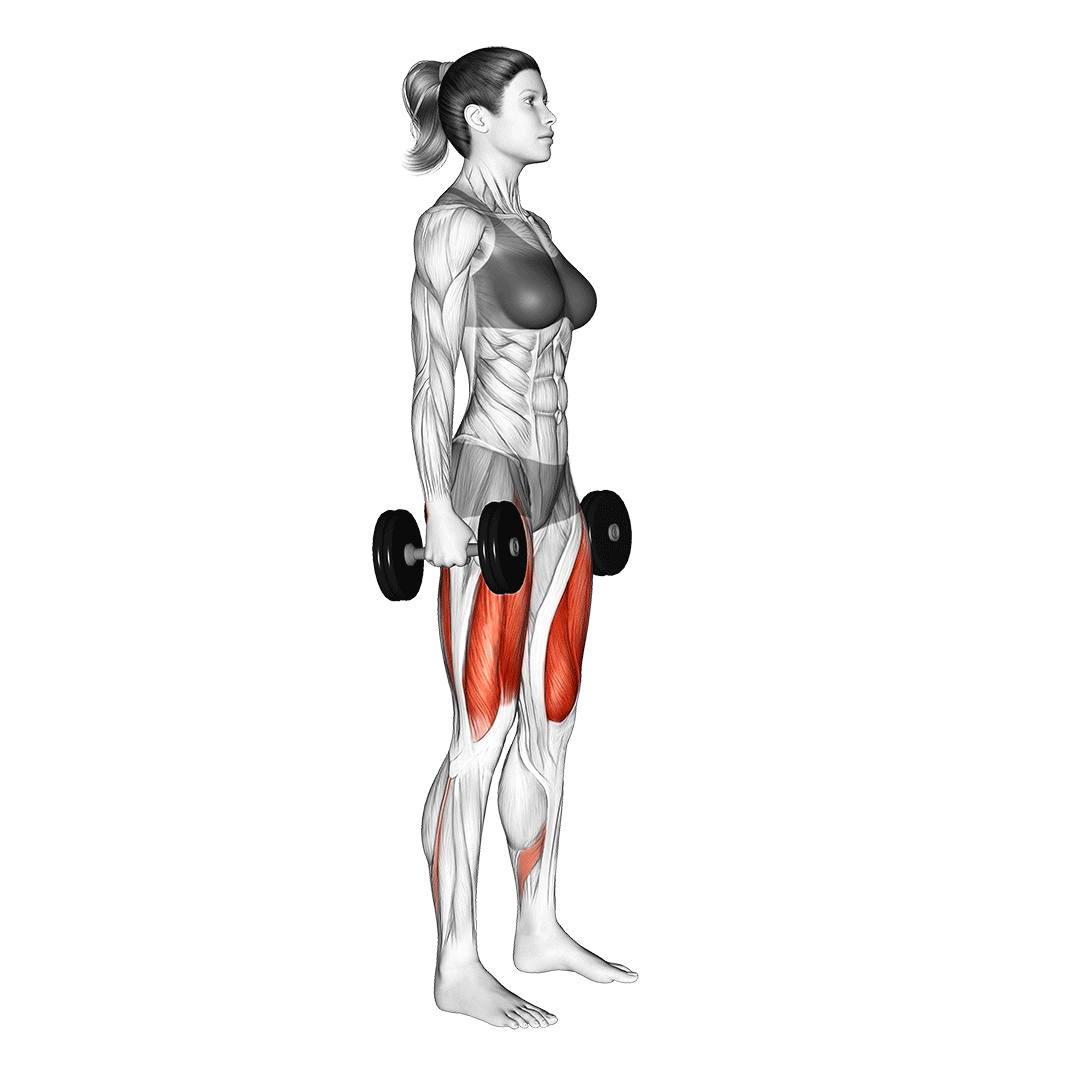
The majority of dumbbell squat variations are performed so as to elicit a training response in the muscles of the lower body, especially in regards to the quadriceps and glutes which often take a primary role.
Unlike most other forms of weighted squat, dumbbell squats allow for a wider freedom of grip and load distribution. Depending on the specific exercise, lifters will have the option of placing a pair of dumbbells atop their shoulders, holding them in the front rack position, at their sides, or even in a goblet position.
Dumbbell Squat Variations
1. The Conventional Dumbbell Squat
When looking into dumbbell-based variations of the squat, the first exercise to familiarize yourself with is the conventional dumbbell squat.

As one can likely guess, this particular variation is nearly identical to a bodyweight or barbell squat, with the sole difference being torso angle depending on the position of the weight.
Like most other squat variations, the conventional dumbbell squat is a compound closed chain exercise of moderate intensity and complexity. It is perfectly appropriate for novices and those who struggle with the use of a barbell for back squats.
Muscles Targeted
The standard dumbbell squat targets the quadriceps, glutes and hamstrings in a large range of motion.
Static involvement of the core, erector spinae and forearms will depend on how the dumbbells are positioned during the exercise. Generally, higher on the body equates to greater core and spinal erector usage, and simply gripping the dumbbells at the sides means more forearm work.
Benefits as a Dumbbell Squat Variation
The conventional dumbbell squat is the “standard” squat variation that one should learn prior to attempting more complex or heavy exercises. This is done so as to build both technical skill and physical strength.
Apart from acting as a baseline exercise, the dumbbell squat is also an all-around excellent movement for targeting the muscles of the lower body in an equal fashion. It is of particular note for featuring far less of the disadvantages associated with a conventional barbell squat or a bodyweight squat.
How-to:
To perform a repetition of the conventional dumbbell squat, the lifter will select a pair of dumbbells, raising them up to the tops of their shoulders or simply holding them at the sides.
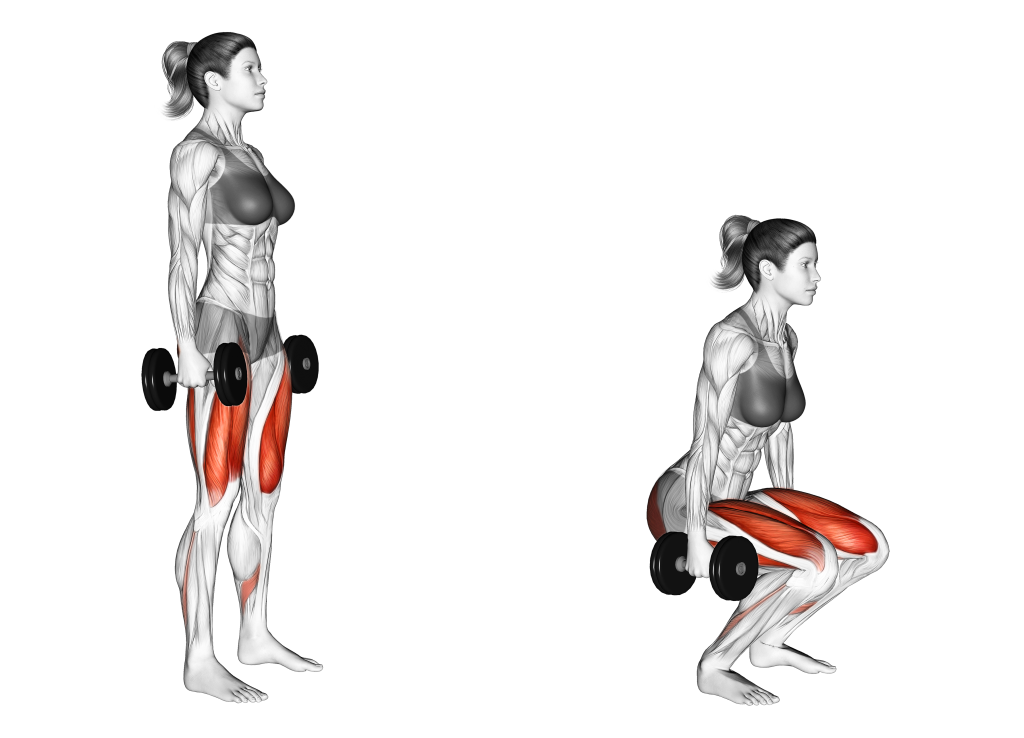
Setting the feet slightly wider than hip-width apart and bracing the core, the lifter then pushes their pelvis backwards and lowers themselves until the hip crease is parallel with the knees or lower.
Now at correct depth, the lifter will drive through their heels and draw themselves back into an upright position - thereby completing the rep.
2. The Dumbbell Front Squat
Unlike the conventional dumbbell squat, the dumbbell front squat places the weights atop the chest shelf, shoulders and clavicles. This greatly increases quadriceps recruitment alongside acting as a more spine-friendly alternative to other dumbbell squat variations.
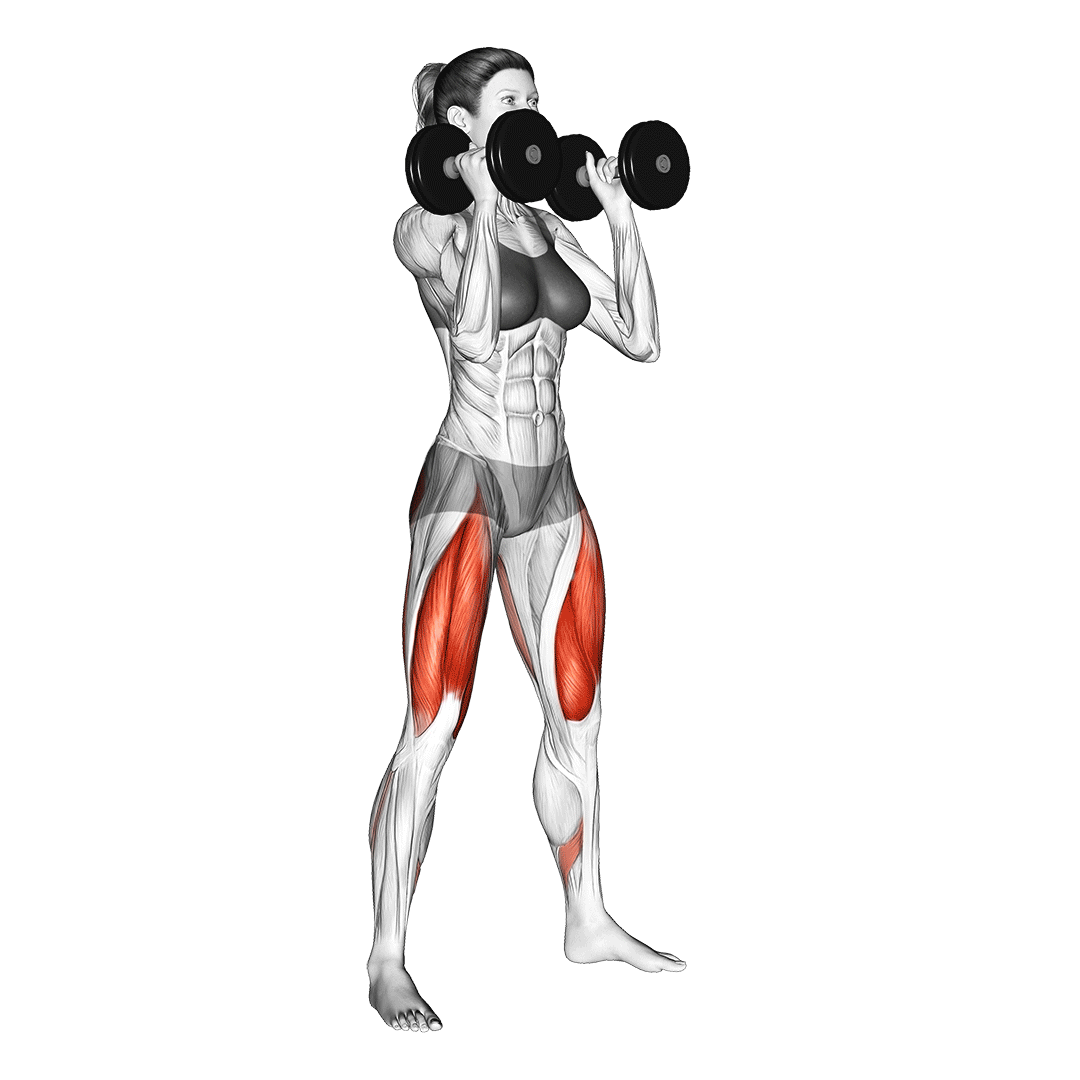
The dumbbell front squat features a somewhat more narrow stance than other squat variations, and may require the lifter to dial back how much weight they are lifting on account of its position at the front of the torso.
Muscles Targeted
The dumbbell front squat places greater emphasis on the quadriceps muscles, but will nonetheless also target the glutes and hamstrings. In addition, greater core contraction is needed due to the more upright position of the torso.
Benefits as a Dumbbell Squat Variation
Apart from being better at working the quadriceps and protecting the spine, the front squat is also excellent for making the most out of a limited amount of weight; This is especially an issue with dumbbells.
How-to:
To perform a dumbbell front squat, the lifter will rack a pair of dumbbells in the front rack position atop their chest shelf, taking care not to round the upper back. The feet should be set around hip-width apart, toes pointing forwards.
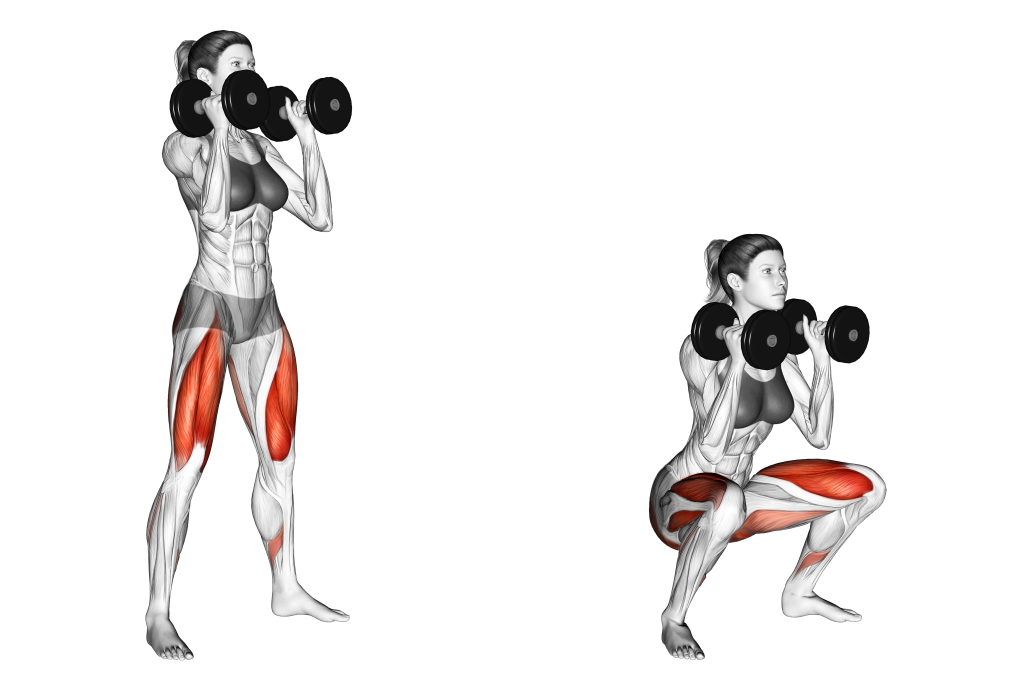
Now positioned appropriately, the lifter will sit back and bend at the knees - stopping once they’ve reached parallel depth or lower.
Once at the correct depth, the lifter will drive through their heels and rise back to their starting position.
3. The Dumbbell Sumo Squat
The dumbbell sumo squat is simply a conventional dumbbell squat performed with a significantly wider stance. This maximizes posterior chain recruitment and greatly reduces the range of motion involved.
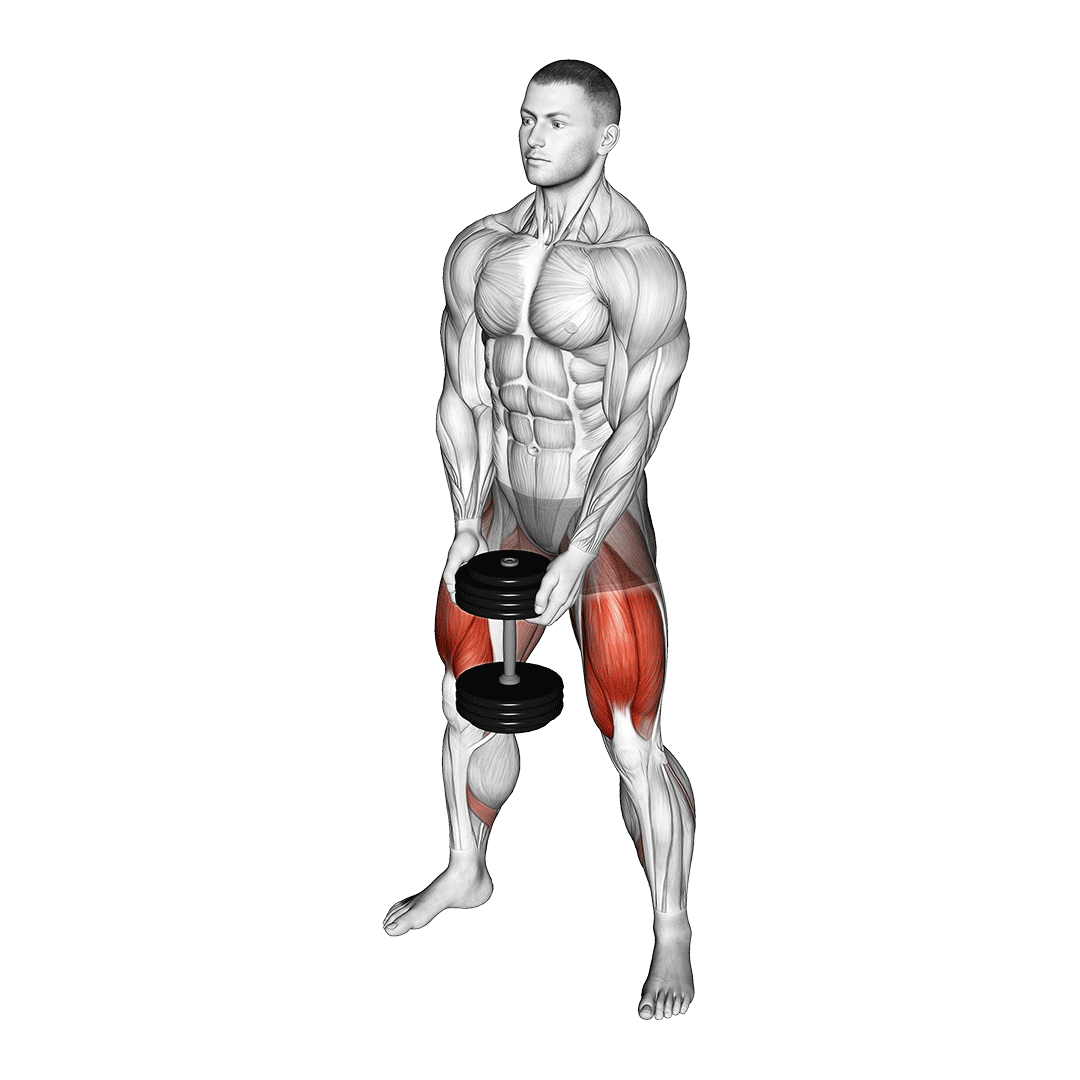
Dumbbell sumo squats allow the lifter to grip the dumbbell in a goblet position, and otherwise fulfill the same role as any other bilateral squat variation - only with reduced quadriceps work.
Muscles Targeted
Dumbbell sumo squats primarily target the glutes and hamstrings, while also working the erector spinae and lower back muscles to a comparatively greater degree than many other variants.
Benefits as a Dumbbell Squat Variation
Sumo squats - regardless of whether dumbbell or not - feature greater posterior chain development due to the wider stance involved. This stance also reduces the range of motion of the exercise, allowing for more weight to be lifted with each repetition.
How-to:
To perform a sumo squat, the lifter will first need to adopt a wider foot positioning than they would with a conventional squat. This means being anywhere from shoulder-width apart to far wider, toes pointing diagonally outwards. All other aspects of the stance remain the same.
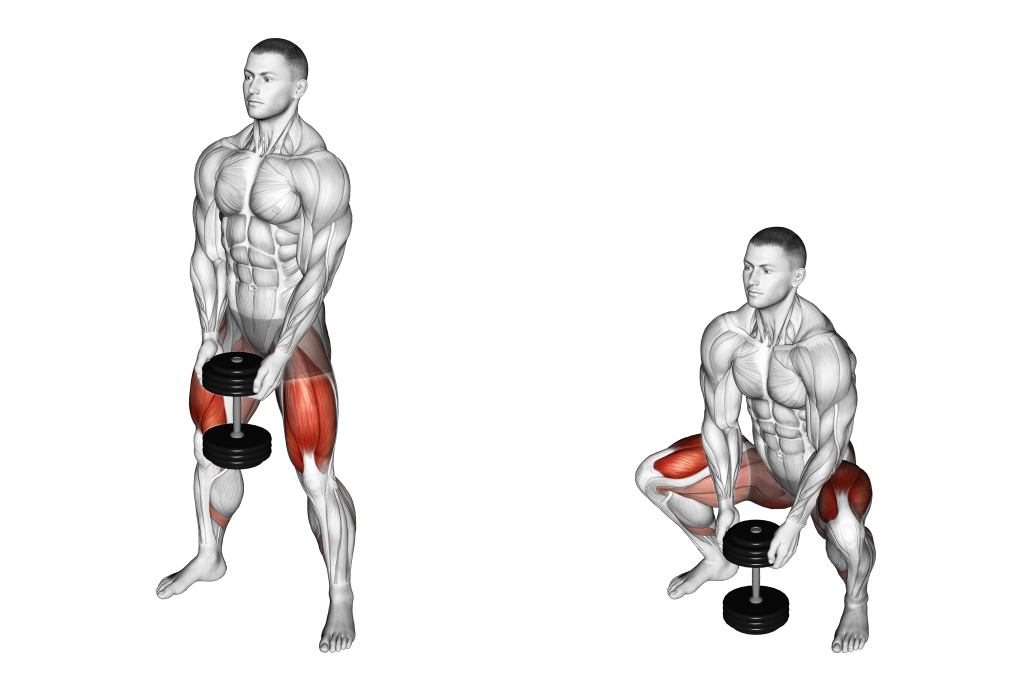
Now in the correct stance, the lifter will grip the dumbbells in the space made between their legs, contracting the core and pushing the chest out so as to keep the torso as upright as possible.
From this point, the lifter pushes their hips backwards and bends at the knees, lowering until the hips are just shy of being parallel with the tops of the knees.
Now at proper depth, the lifter can complete the repetition by driving through their heels and rising back to the starting position.
4. The Dumbbell Split Squat
A squat variation most often performed with dumbbells - the split squat is a unilateral lower body exercise where the lifter enters a staggered (but stationary) stance and kneels towards the floor.
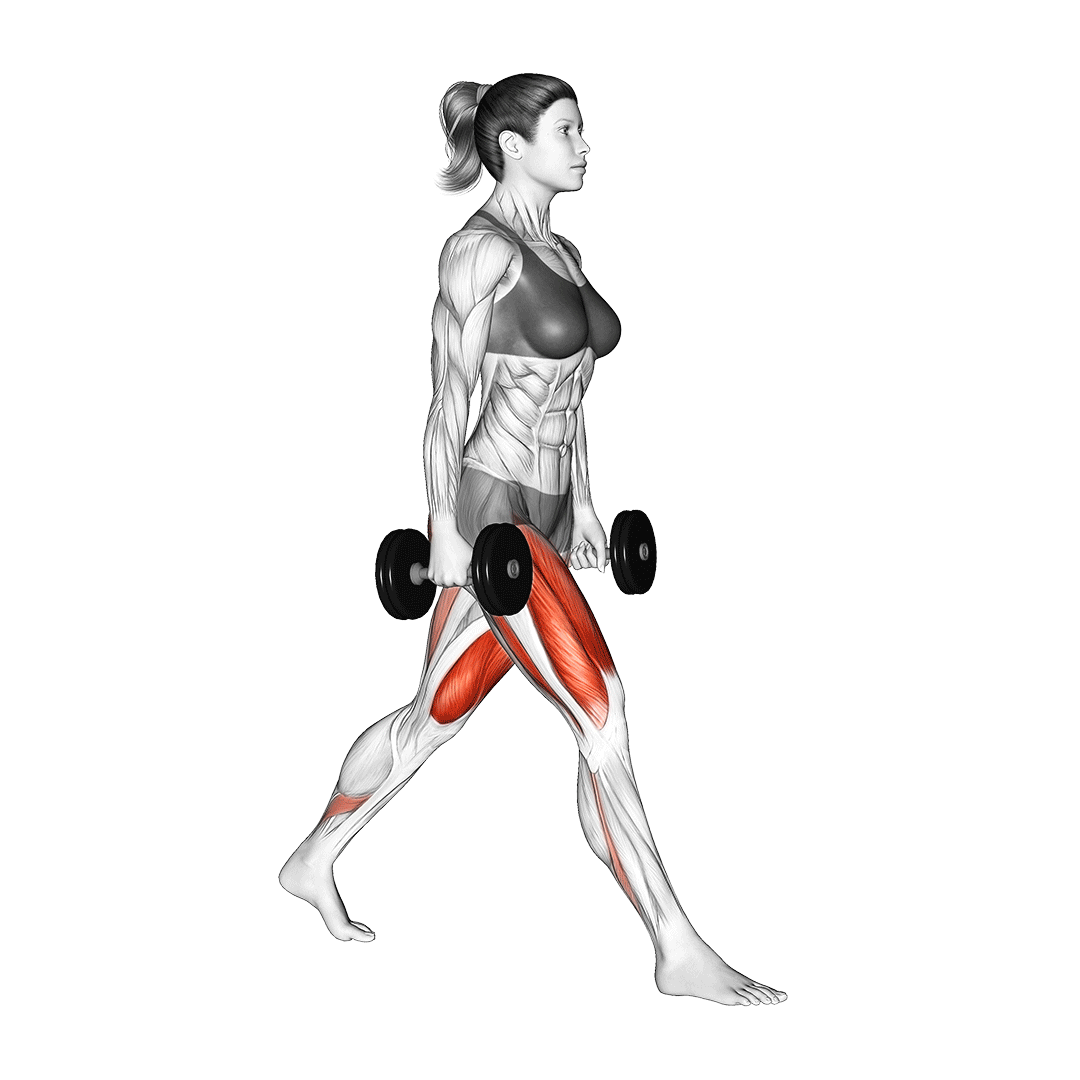
Split squats are considered to be an excellent exercise for targeting the quadriceps in a functional and more specified manner.
Muscles Targeted
Dumbbell split squats primarily target the quadriceps, but will also recruit the glutes, hamstrings and calves to a lesser extent as well.
Benefits as a Dumbbell Squat Variation
The main benefit to doing split squats revolves around its unilateral recruitment of the leg’s musculature. Not only does this allow for less total weight to be needed, but it also provides the opportunity for training each side of the lower body individually.
Split squats are a particular favorite among athletes for their functionality and closer replication to real-world physical activities.
How-to:
To perform a dumbbell split squat, the lifter will stand with one leg stepped forwards, the other stretched out behind them for stability. The majority of the body’s weight should be distributed onto the forward-facing foot.
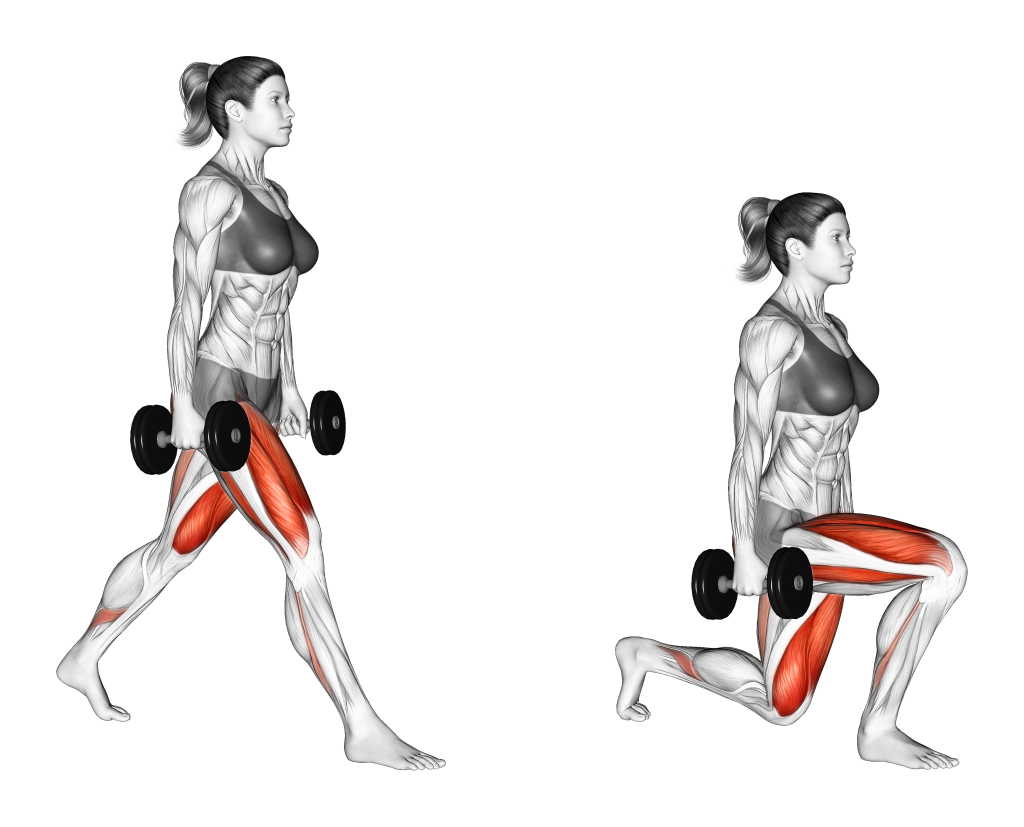
The dumbbells may be gripped at the lifter’s sides or otherwise in the front rack position, depending on their sense of balance.
Once stable in a staggered stance, the lifter will bend both knees simultaneously, lowering themselves until their forward-facing thigh is parallel to the floor. The knee of the hindleg should not touch the ground as they do this.
From this position, the lifter may complete the repetition by driving through their heels back into an upright position.
5. The Goblet Squat
Named so because the dumbbell is held between both palms like a goblet; the goblet squat is a cross between a sumo and conventional dumbbell squat, featuring mechanical aspects from both.
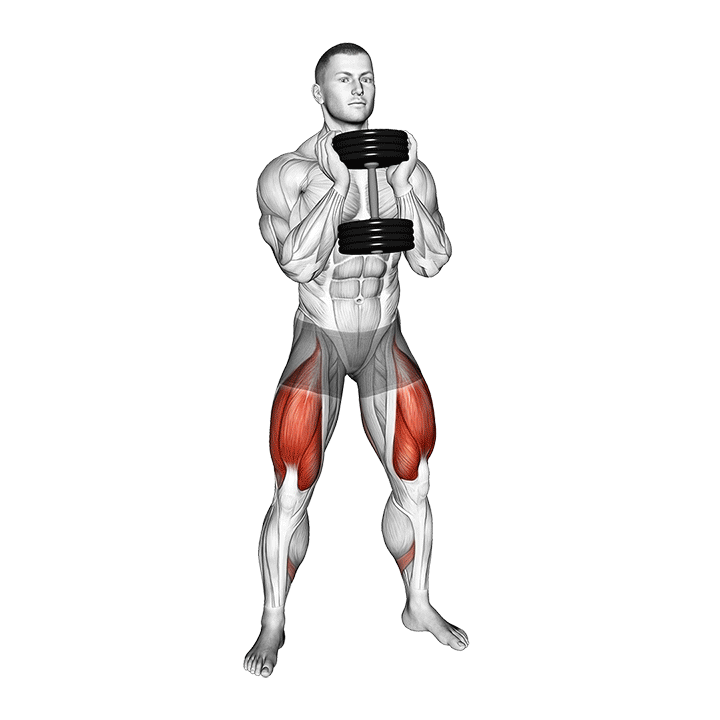
Goblet squats are most often performed by individuals with a limited inventory of training equipment, or otherwise as a method of intensifying recruitment of the quadriceps and core in comparison to regular squats.
Muscles Targeted
The goblet squat works the quadriceps, glutes and hamstrings in equal measure. In addition, the position of the weight at the front of the torso calls for greater stabilizer muscle recruitment.
Benefits as a Dumbbell Squat Variation
Goblet squats share much the same benefits as the conventional dumbbell squat - that being an all-around solid lower body exercise for building strength and mass. In addition, it can function as a more spine-friendly alternative to other types of squat that place the weight atop the back.
How-to:
To perform a goblet squat, the lifter will set their feet slightly wider than hip-width apart, dumbbell held by one end in both hands at chest level.
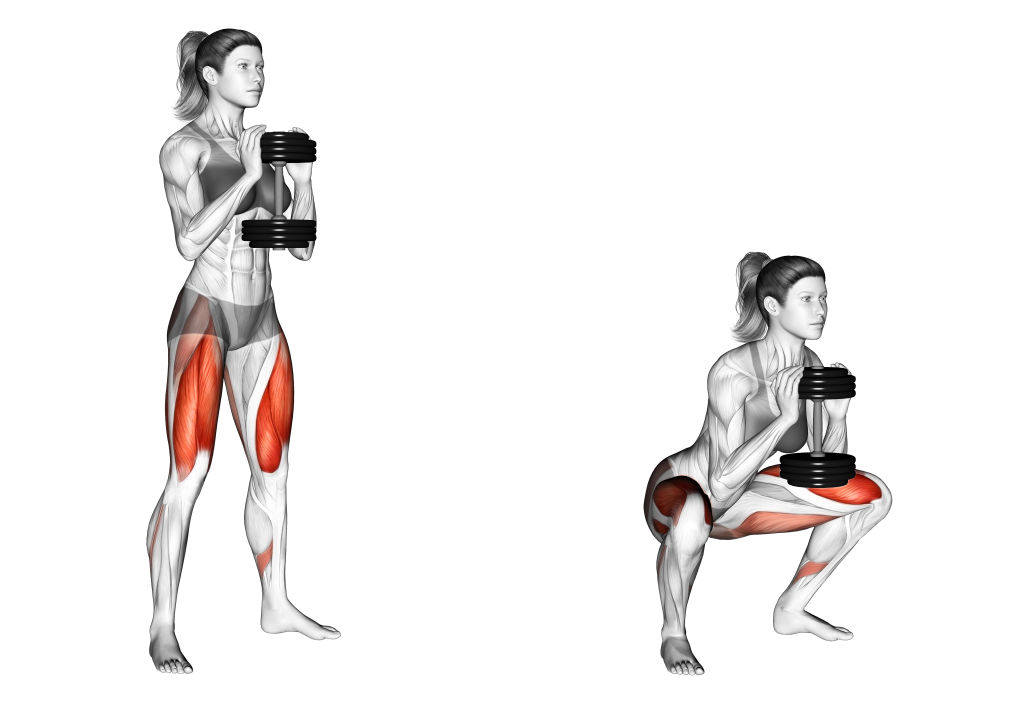
Contracting the core, keeping the spine neutral and the head facing forwards, the lifter will then push their hips back as they bend at the knees simultaneously. The dumbbell should continue to be held at chest level, with the elbows remaining between the legs when at maximum depth.
Once reaching parallel depth, the lifter will then drive through their heels and rise back to the starting position. This completes the repetition.
6. The Dumbbell Bulgarian Split Squat
The Bulgarian split squat is a more intense variation of the standard split squat - both of which are most often loaded with the use of a pair of dumbbells.
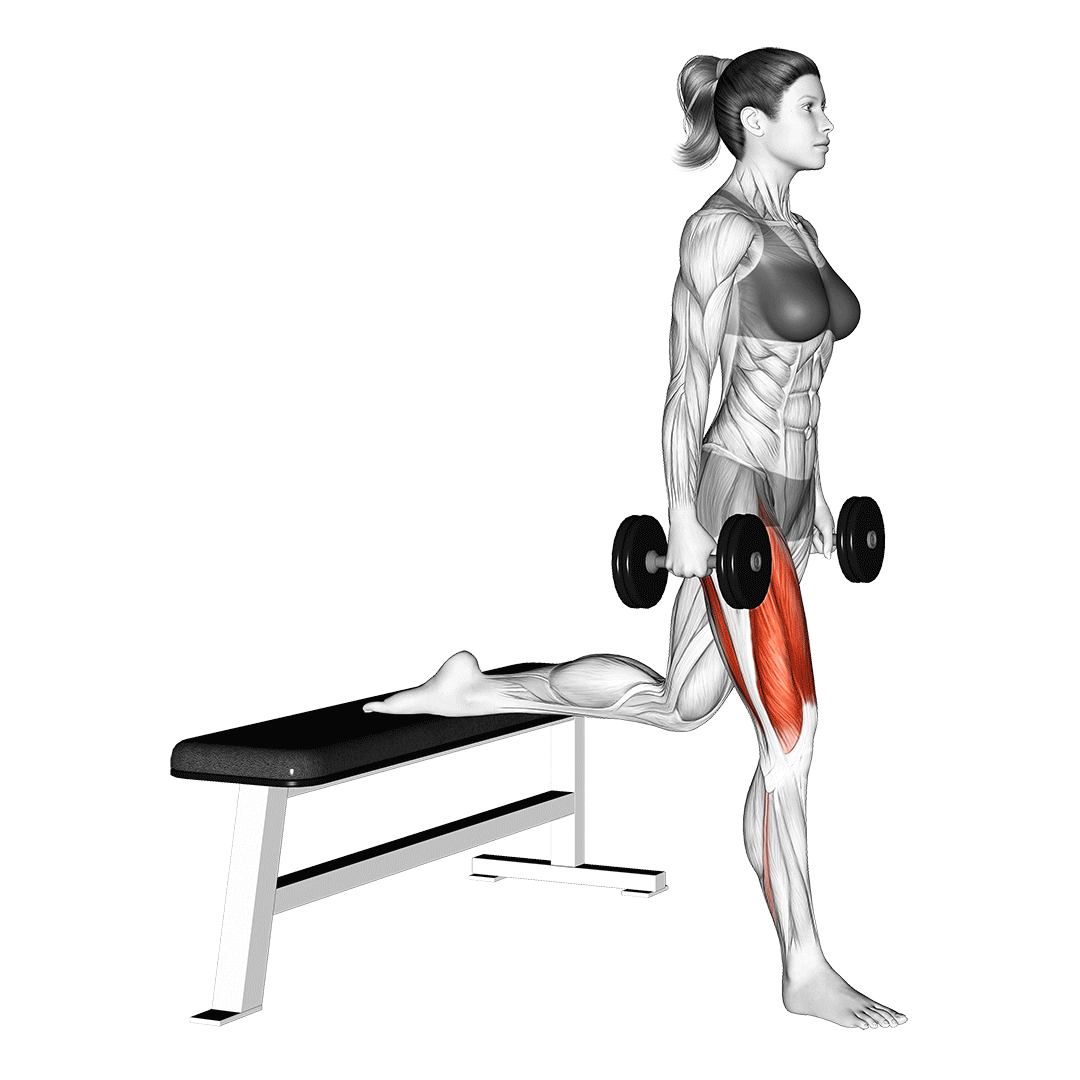
Bulgarian split squats primarily differ from their conventional counterparts by elevating the lifter’s hind foot. This greatly increases the exercise’s demand for balance, and shifts far more of the body’s weight towards the sole remaining leg.
Apart from a pair of dumbbells, the Bulgarian split squat will also require a bench or similar platform to raise one leg on.
Muscles Targeted
Bulgarian split squats are mainly a quadriceps-dominant exercise, but will nonetheless also target the hamstrings, calves and glutes to a lesser extent.
Benefits as a Dumbbell Squat Variation
The Bulgarian split squat is of particular note among squat variations for its effectiveness as a unilateral exercise. Although not quite a pistol squat, relegating one leg to act solely as a source of stability allows the lifter to fully focus on properly contracting the muscles of one side at a time.
In addition, the Bulgarian split squat features a comparatively larger range of motion than most other split squat variations.
How-to:
To perform a repetition of the Bulgarian split squat, the lifter will stand facing away from a bench, setting one foot atop it behind them. The opposite foot should be stepped far enough forwards that the hindleg is stretched out behind them.
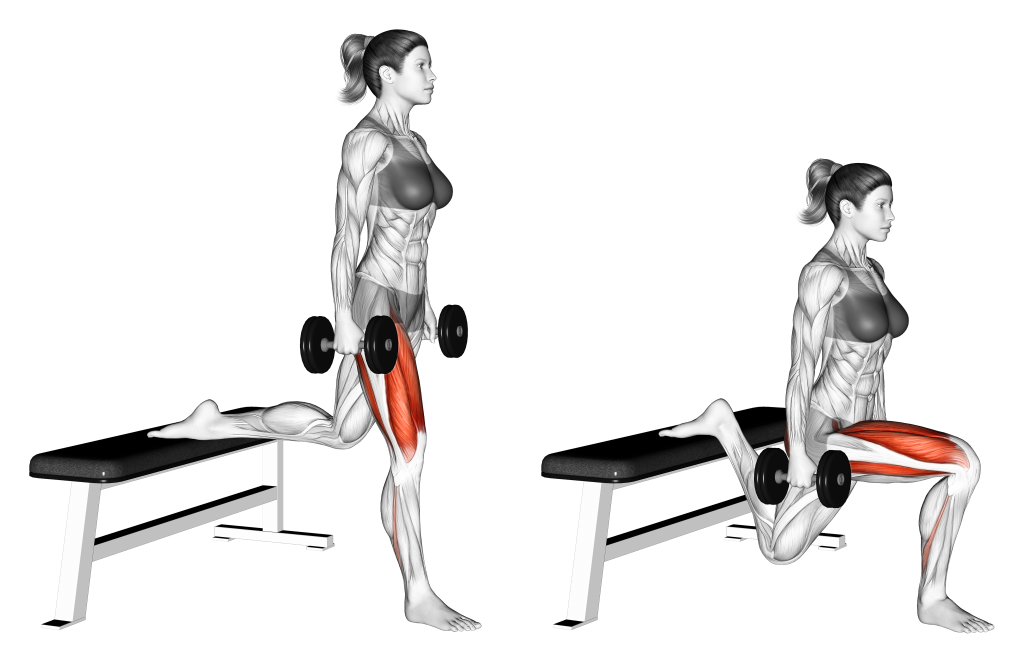
Gripping a pair of dumbbells, the lifter then contracts their core, keeps their spine neutral and bends both knees simultaneously. This motion should continue until both knees are at a 90 degree angle of flexion.
Once reaching the appropriate depth, the lifter drives through their one remaining heel and rises back to the starting position. Don’t forget to repeat the exercise with the opposite leg.
Which Dumbbell Squat is the Best?
In truth, there is no “best” dumbbell squat variation.
Each serves its own unique purpose within a training program, with exercises like the goblet squat or conventional dumbbell squat being more appropriate for general training. On the other hand, movements like the sumo or front squat are more situational in their usage.
If you have no experience performing squats, we suggest you first start out with the conventional dumbbell squat, then branch out to more complex variations once you’ve mastered it.
References
1. Knoll MG, Davidge M, Wraspir C, Korak JA. Comparisons of Single Leg Squat Variations on Lower Limb Muscle Activation and Center of Pressure Alterations. Int J Exerc Sci. 2019 Aug 1;12(1):950-959. PMID: 31523343; PMCID: PMC6719809.
2. Erdağ, Deniz & Yavuz, Hasan. (2020). Evaluation of Muscle Activities During Different Squat Variations Using Electromyography Signals. 10.1007/978-3-030-35249-3_114.
